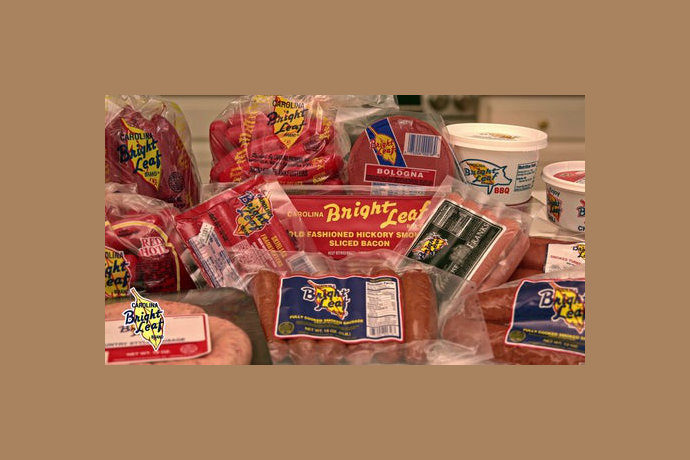KANSAS CITY, MO. – Given the labor challenges facing operators of meat and poultry plants, automation is becoming a more common option to a wider variety of companies. During a Jan. 18 webinar hosted by the North American Meat Institute (NAMI) titled, “Labor Outlook and Case Studies in Automation Solutions,” presenters shared information about the current labor situation and how automation can deliver solutions to address labor shortages while creating opportunities to increase operational efficiencies.
Alex Chausovsky, director of analytics and consulting with Miller Resource Group, a Lombard, Ill.-based executive recruiting firm, advised attendees on how to develop hiring strategies by adapting to the shrinking labor pool at a time when jobs far outpace job hunters. He said it is crucial that today’s employers develop a talent strategy with goals that include becoming a best-in-class employer that is attractive to potential employees and adopting policies that result in higher retention.
“This is a completely different labor market than what we saw prior to the pandemic,” Chausovsky said, “So, you need to adapt.”
He urged attendees to develop recruiting, hiring and retention programs that are based on reliable, current and actionable data versus relying on gut feelings.
To prove his point, Chausovsky shared some data from the US Bureau of Labor Statistics about the current job market, including the fact that at the onset of the pandemic the US labor force included nearly 165 million people compared to just over 162 million at the end of 2021, or more than 2 million fewer people working. Meanwhile, the unemployment rate is now at 3.9%, the lowest since the pandemic began and there are currently 10.6 million job openings in the United States. Of those, he said there are about 900,000 positions available in the manufacturing sector, which includes meat and poultry processing. Perhaps the most impactful number Chausovsky shared was that with an estimated 6.3 million people looking for work and 10.6 million jobs available, there are only 0.6 job seekers per job opening.
To address the shortage, Chausovsky said employers in the meat and poultry sector should be prepared to pay higher wages, look for ways to offer potential candidates flexibility in policies and schedules and have a strategy to retain them once they are hired, including benefits and perks.
Another presenter in the webinar was Kurt Byrd, chief financial officer with Smithfield, NC-based Carolina Packers Inc., which is best known for its Bright Leaf Hot Dogs and Red Hots. He said the labor issue for his company became evident about six years ago.
“About 2016, we started noticing some more turnover on your production line jobs,” he said, and plant operators hoped the situation wouldn’t be long lasting. “We had never had to utilize temporary services before; we just always had a steady flow of employees and most people stayed 15-plus years.”
The short-term solution was to hire temporary employees to close the gap, but working with a team of inexperienced employees resulted in decreased productivity and a solution was needed.
“The obvious thing for us was to look at machinery,” Byrd said.
Automation was a solution the company hadn’t considered before, but it was the only thing that made sense.
“It was never a goal that ‘we’re going to replace people with machines,’ that’s something we never talked about here,” Byrd said. “But as the market’s gotten so tight there was no choice. We have production we have to make and we don’t have the labor to fill it.”
After more than five years of seeing labor costs hold steady while productivity plummeted, the company’s leaders agreed to look at where in the operations did the labor shortfall result in production bottlenecks and then look at alternatives. When it was determined that the packaging area of the plant was the weakest link, with about seven workers trying to keep pace with production, Byrd said rather than add more labor to the equation, the decision was made to invest in automated packaging equipment.
The company consulted a consulted a supplier partner it had worked with before, Kansas City, Mo.-based Multivac. With one packaging line focused on loose, bagged products and two vacuum packaging lines, Byrd worked side-by-side with Waheed Chaudhry, Multivac’s automation project sales engineer, to identify which of the lines could benefit most from automated technology. After concluding that automating one of the vacuum packaging lines, which already was equipped with Multivac equipment, Chaudhry offered options for the company. Byrd said deciding on an automated loading solution and implementing it was about a year-long process as Carolina Packing tends to make transitions like this carefully and methodically. That part of the line went from requiring up to seven workers to just three or four today, according to Byrd.
“We’re excited to see what comes next,” he said.
Chaudhry said that early in the evaluation phase of determining how or if automation can be implemented in a plant, the goal is to look for the lowest hanging fruit in terms of optimizing operations. For many companies, efficiency gains are found in the labeling or printing operation or inspection of the labels.
“It’s not just about robots and it’s not just about cutting back labor,” he said. “It’s creating efficiency and then repurposing that labor to give them a better chance at success.”
Besides addressing labor challenges, Chaudhry said automation also provides data visibility, providing plant operators with quantified, actionable information about the processes.
“There’s a lot of data that is being transferred from equipment, from the processing side to the primary packaging to the secondary packaging, all the way out to the distribution,” he said. “That data visibility and capturing that data and doing something with it is just very powerful. So, there are plenty of opportunities outside of just robotics.”


